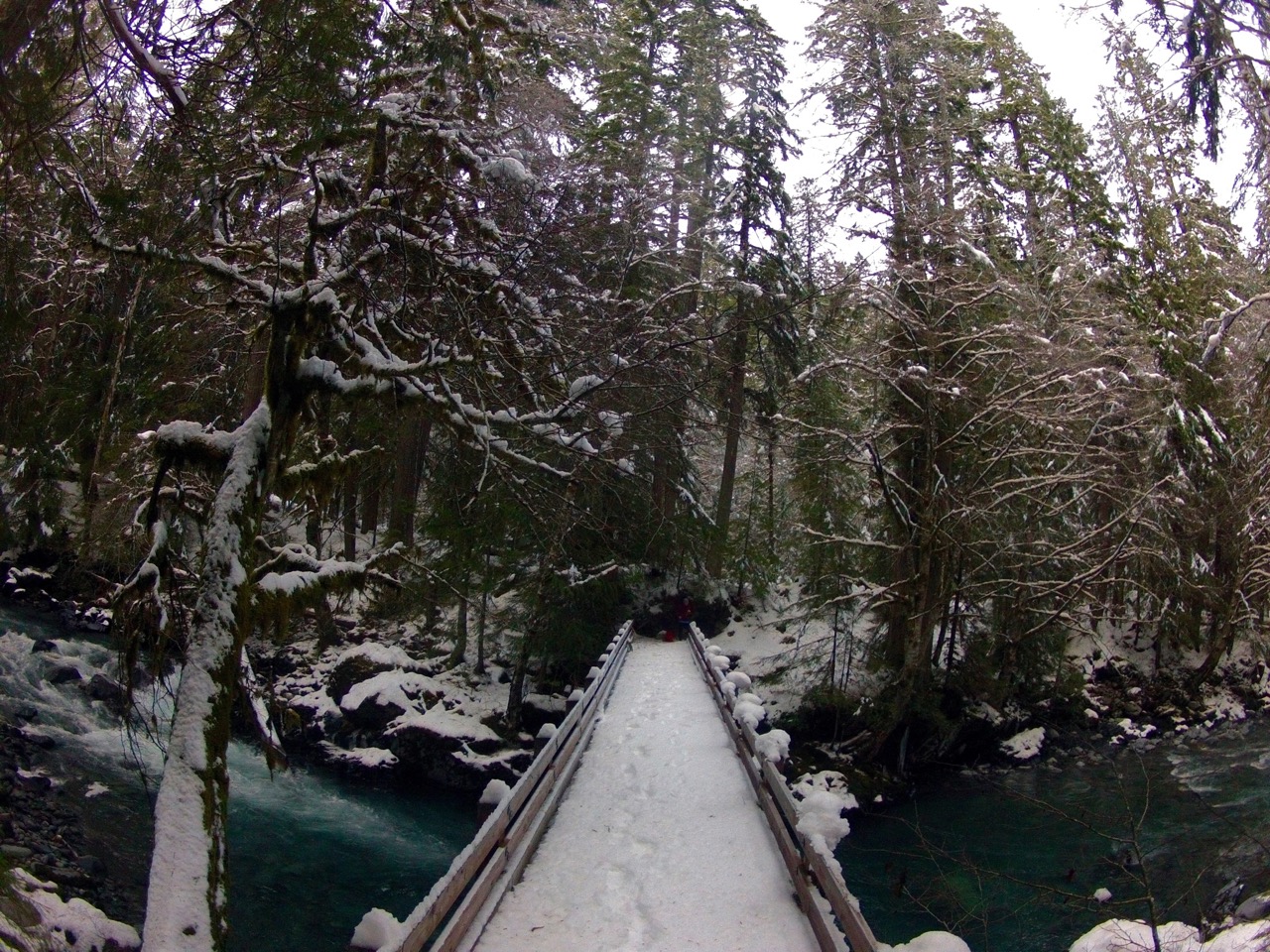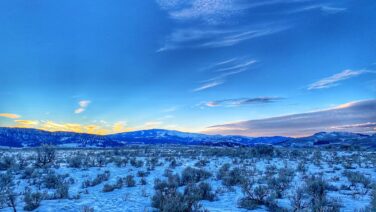As the snow falls on the mountains and hills around the Pacific Northwest, the hiking community struggles to find someplace new and remote, rewarding, accessible and beautiful. Franklin Falls, Lake Wenatchee, Hurricane Ridge, Artist Point, Paradise; the crowds gather at popular winter destinations around the region, bottlenecked by a lack of accessibility to other regions. Surrounded by a wealth of natural wonders, residents of Washington find ourselves repeating the same trips, or staying indoors until the weather gets better. Don’t fall into that trap. In the winter, while many will try to be awesome and climb high for epic, snowy, panoramic views, hundreds of miles of trails are sitting mostly empty along the wild and scenic rivers of Olympic National Park and Peninsula. One such river, the Dosewallips, is the ideal place to get away and experience the beauty of nature, just a short drive from the major cities of the Puget Sound.
Two hours from Seattle and Tacoma and an hour and a half from Olympia, The Dosewallips River Trailhead was once one of the most popular entry points into Olympic along the Hood Canal. That was until a little over a decade ago, when several landslides damaged the access road to the park entrance, closing the region for vehicular traffic. Park management, faced with mounting budget shortfalls reaching multiple millions of dollars, decided against repairing the road. The ranger station was shuttered, only open in the summer, and the access road turned into a 5.5 mile hiking trail for good. That or until someone can find $2-3 million dollars and pass the Environmental Assessment procedure for putting in a new road to the region. That isn’t going to happen for awhile, so today, the only way into the Dosewallips area of Olympic is to hike along the old road.
Olympic is known for having steep trails and being remote. Yet, there are hundred of destinations accessible year round that lead into pristine, unspoiled wilderness. There are areas that are waiting for your adventure without a need for winter gear. One of them is the always gorgeous and accessible Dosewallips Trail, on the eastern side of the park. The trail up the Dosewallips is simple to follow and grows ever more beautiful with each passing mile. Much of the trail largely consists of a now washed-out road that is slowly returning to the wilderness. Running next to the Dosewallips River, the trail passes over small creeks, through forests and next to Dosewallips Falls before reaching the now remote campground and ranger station. From there, you will want to keep heading upriver to reach the always-gorgeous Dose Forks Bridge. Stopping here and returning gets you a round-trip of 14 miles with only 1,000 feet of elevation gain. Not bad for a walk in the normally steep and wild Olympics.




The wide trail winds it’s way along the Dosewallips River, gently gaining in elevation. For five and a half miles, the trail makes it way along what was once the road to the ranger station deeper into the Park. In the winter, the trail will have snow, but nothing insane or too difficult to handle. In fact, this is a great place to trail run during the winter months. When we last ran this trail in snow, we found this to be an easy run. The highlights for the trail are pretty great. At around kilometer seven, you encounter the truly magnificent Dosewallips River waterfall, one of the many forgotten waterfalls on the Olympic Peninsula. The sheer power, especially in the winter, with many boulders frozen over from the spray, always takes us by surprise and was a great reminder that this is a great place for an adventure. Past the waterfall, you will eventually reach the old ranger station and maple grove, which should be snowy and beautiful in the winter months. From here, it is only 1.5 miles along the trail to reach the river and cross a stunning wooden bridge across this gorgeous river.
The distance might seem like a lot, but the road is trek to the bridge is mostly flat with minimal elevation gain. Snow may slow your day up, but you will be rewarded with elk herds, waterfalls, stunning views and entrance into pristine and untouched wilderness. Not bad for a short drive from the Puget Sound. The Dosewallips is one of many gems on the Hood Canal side of Olympic and is a great way to get away from the stresses and connectivity of every day life. Out along the Dosewallips, worry fades away, replaced with a deeper connection to the area we all know and love.
Finally, there is a point of contention about the Dosewallips for many around the region. Many people in the area, including rangers in Olympic National Park, claim the proper pronunciation of Dosewallips as “Dosey-Wall-Lips.” They are wrong and are saying it in a way that makes those who pronounce it correctly cringe with discomfort. The original name for the river was “Dos-wail-opsh” and linguists that I have talked to who study local languages agree that the correct modern pronunciation is “Dose-Wall-ips.”
If you say Dosey, you are incorrect. Sorry. These are facts.
DISCOVER MORE OLYMPIC NATIONAL PARK DESTINATIONS
THE DEFINITIVE GUIDE TO THE OLYMPIC NATIONAL PARK & OLYMPIC PENINSULA.




